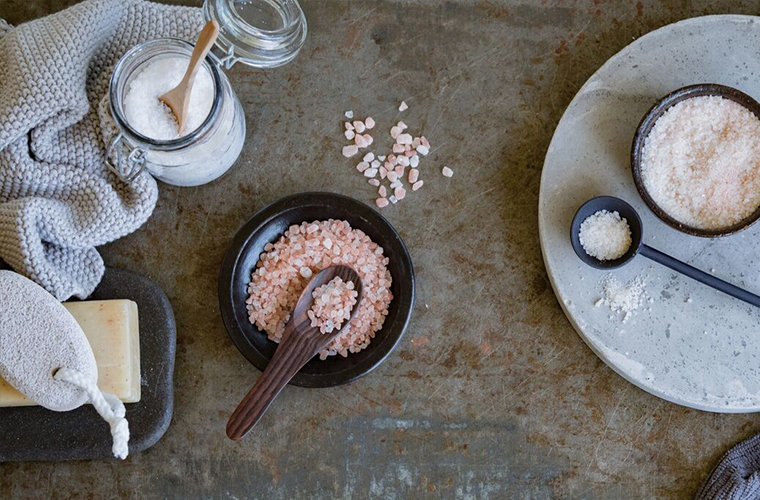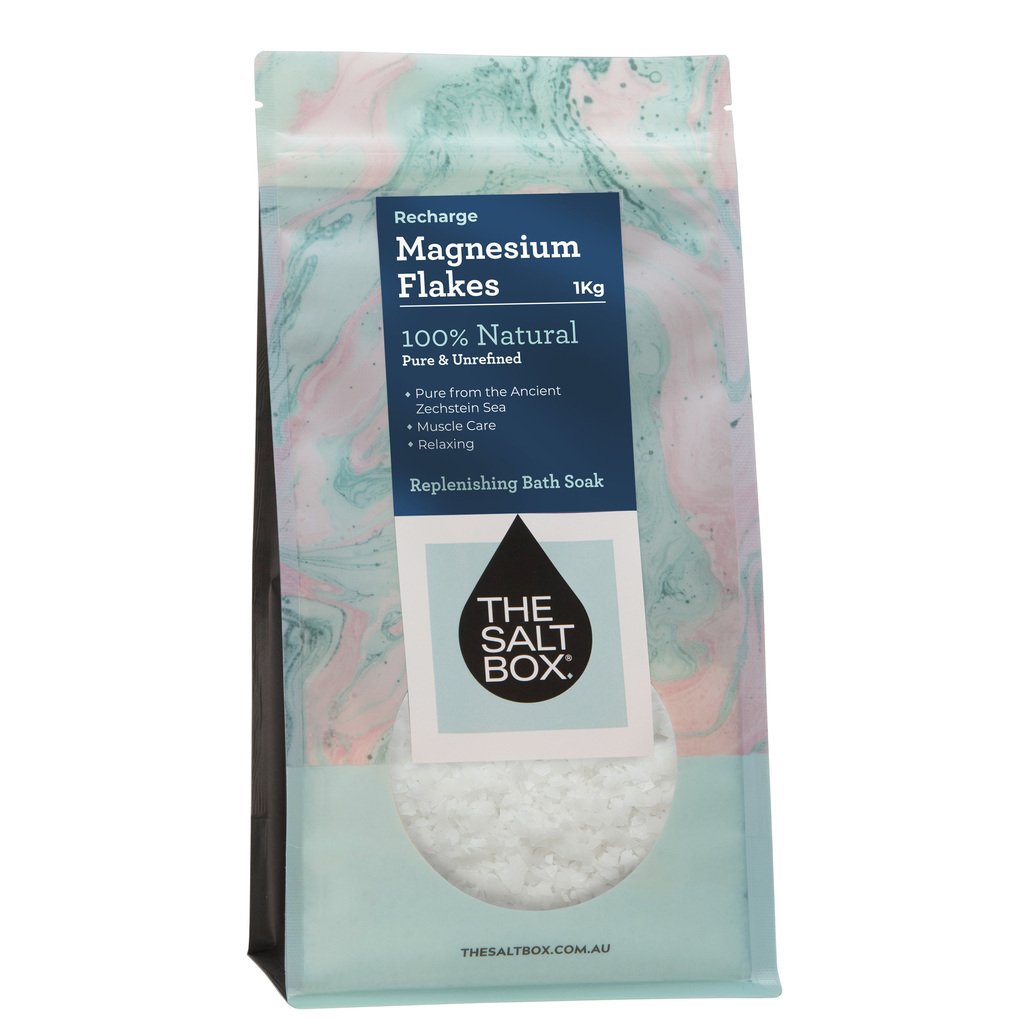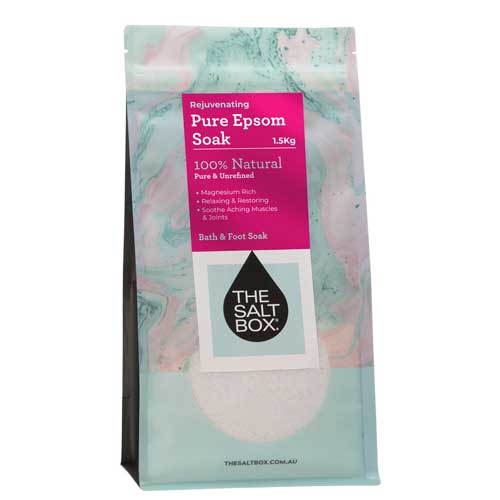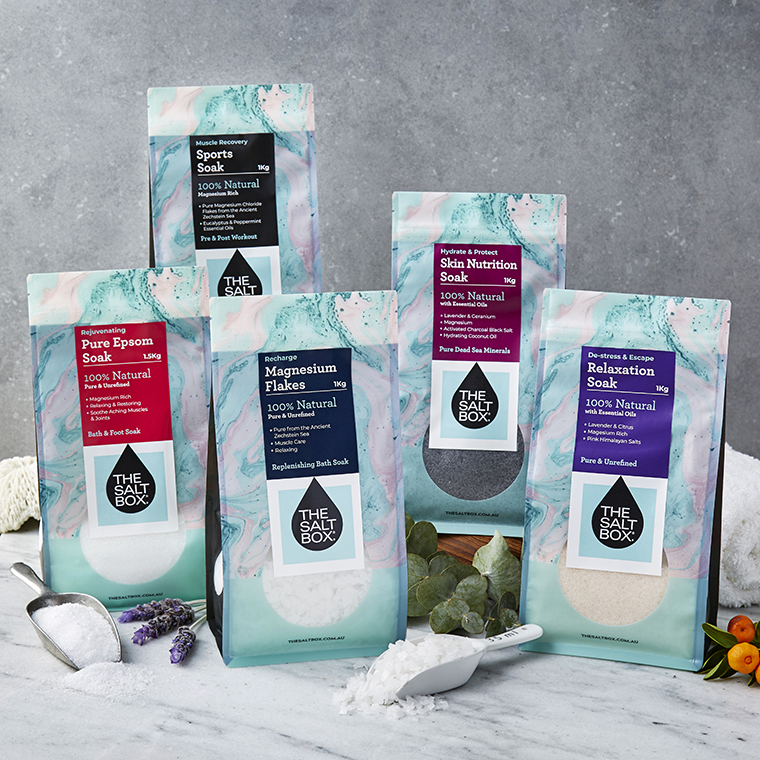The Importance of Magnesium For Muscle Recovery
Posted by The Salt Box on 3rd May 2018
Whether it’s from a long day at work on your feet, a quick run in the morning, or a game of netball on the weekend, the dull ache and stiffness of tired, worn-out muscles is something we can all relate to.
It may be something you deal with on a daily or weekly basis, depending on your lifestyle, or it may be an occasional obstacle you have to overcome. But what we can all agree on is that suffering from sore muscles is no fun, and that we’ve all sought relief in our ways.

What is magnesium and what does it have to do with muscles recovery? A whole lot actually. Take a look at how a soak in a magnesium-enriched bath can help soothe and restore your sore muscles.
What Is Magnesium and What Does It Have To Do With Muscle Recovery?
Magnesium is an essential mineral that plays an important role in over 300 biochemical functions in the body. It is required by almost every cell in our body and is especially important to cells in our muscles, particularly during exercise and for post-exercise recovery.
When you exercise, your body’s magnesium levels drop rapidly. This is because it is an electrolyte that is used to conduct electrical impulses and action potentials, such as the contraction of a muscle. It is also crucial for sustaining energy levels during strenuous exercise.
When you recover after exercise, magnesium keeps on working. It helps relax the muscles and prevent them from cramping or spasming. It also helps replenish red blood cells, which have been hard at work providing your body with oxygen during exertion. And it helps reduce inflammation (in fact, magnesium is one of the most powerful anti-inflammatory minerals we consume).
All of these factors together indicate that magnesium is absolutely crucial for muscle recovery. However, magnesium deficiency is also one of most common mineral deficiencies found in adults, and many health professionals recommend taking steps to ensure our bodies are getting enough, particularly to those who lead an active lifestyle.
Replenishing Magnesium For Muscle Recovery
There are a number of sources that you can look to for replenishing magnesium. It is found in many foods, including whole grains, spinach, quinoa, almonds and cashews. You can also take a supplement to fast-track the process. But if you are looking for a highly effective way to revive sore muscles with magnesium, there’s only really one way to go: a long, warm magnesium-enriched salt bath.
When you take a salt bath, the minerals in the water are absorbed into your body transdermally through the process of osmosis. This is an extremely efficient process, and is an excellent option for those who do not have a prolonged magnesium deficiency (if this is the case for you, talk to your doctor about diet and supplementation).
A magnesium salt bath works to help muscles recover in two ways: first blood magnesium levels are replenished directly via the skin, helping to relax muscles, reduce cramping and spasms, restore red blood cells and reduce inflammation; second is the rejuvenating qualities of having a hot bath (which further helps relax the muscles and flush out lactic acid).
What Are The Options For a Magnesium Salt Bath
When it comes to magnesium salt baths, there are two options: Epsom salt or magnesium flakes. The two are chemically different, and, interestingly, neither are actually salts. Magnesium flake is a compound of magnesium and chloride. Whereas Epsom salts are a compound of magnesium and sulfate. Each have their own sets of unique benefits, however, both are rich in magnesium, and are equally potent for soothing sore muscles when used in a hot bath.
You can read more about the difference between Epsom salts and magnesium flakes here.
How to use Magnesium Bath Salts For Muscle Recovery
For a relaxing bath soak, add roughly two cups of magnesium flakes to warm water in a standard-sized bathtub. Double the amount for an oversized garden tub. Soak for 20 minutes or more. For specific symptoms, repeat 3 times per week for 2-4 weeks. If you exercise regularly, use after each session.
For a restorative foot bath, fill a tub with warm water, add roughly ¾ of a cup per 10 litres. Once the granules have dissolved, immerse your feet for 20 minutes or more then pat dry with a soft towel. Again, if you have ongoing symptoms, repeat 3 times per week for 2-4 weeks.
(Note: If you enjoy a very hot bath, tone it down if you’re using magnesium flake, as this can affect the efficacy of the minerals).
Check out our range of magnesium flakes and Epsom salt here.




